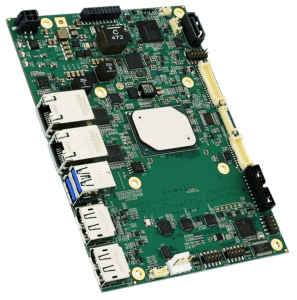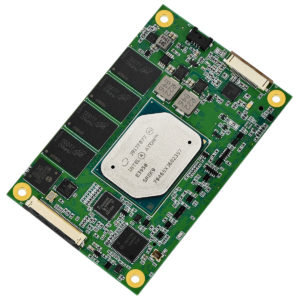
Conclusion: Use One or the Other…or Both!
Two blogs ago, I discussed all the advantages that SBCs offer to the system integrator (see COMs vs. Single-Board Computers). Basically, they put the functionality that previously resided on multiple cards onto a single board (hence, the name).
While that works well in many applications, putting everything you need onto that baseboard isn’t always the best approach for every application. The key reason for that is because some systems integrators require unique functionality that only applies to their specific application. That would require the board supplier to produce a custom board. If the quantities are large enough, the supplier may be okay with that. But more times than not, it doesn’t make sense to redesign and manufacture a board for the good of one customer. Enter the COM, or computer on module.
As you learned in my last blog, COMs Offer a Simple Path to Higher Functionality, COMs can provide that specific functionality that customers need. In fact, the high level of integration of some of the latest semiconductors has turned the latest COMs into SBCs in their own right—almost. You still wouldn’t plug a COM in place of an SBC, but the functionality of the two is getting closer.
Now I’ll try to explain when is best to employ an SBC, when a COM might be better suited for your needs, and when to use both in the same application.
Note that COMs generally adhere to industry standards, and many SBC’s do also, though connectors can vary and still meet the specification. That gives the systems integrator the confidence that there could be multiple sources for a module. Within one board supplier, you’ll find that most of their SBCs fit a similar form factor, making it easy to move from one generation to another. But that may or may not be the case when you move from one supplier to another.
PC/104 represents an interesting example, as it can be put into either category. It can operate stand alone as a single board computer or it can be plugged into a custom carrier or another PC/104 card. A key difference for PC/104, like most COMs, is that it is regulated by an industry body. It’s been around since the early 1990s, and it continues to evolve to embrace the latest technologies. Note that some in the industry refer to PC/104 as the original COM.

The SBC is often the right choice because there’s a good chance it contains everything you need for your application, from a computing perspective. For example, the WINSYSTEMS SBC35-427 industrial SBC makes the most of Intel’s Apollo Lake-I E3900 series processor while featuring three simultaneous display outputs. It also offers the type of I/O that’s needed for a high percentage of applications: two 10/100/1000 Mbit/s Ethernet ports; two USB 3.0 and four 2.0 USB ports; eight bidirectional GPIO; and three serial ports. Up to 128 Gbytes of onboard eMMC solid-state memory rounds out the feature set. When specialization is needed, the SBC35-427 offers Mini-PCIe and M.2 I/O expansion slots to provide access to an array of specialized I/O modules.

When it comes to those applications that are not “mainstream,” a COM might be what you need. You start with the COM Express module then use a COTS or custom carrier card to add the application-specific I/O. For example, the COMeT10-3900, low-power industrial COM Express Type 10 Mini module, designed with an Intel Atom E3900 processor, can be plugged into existing Type 10 carriers that require an upgrade in performance or security with TPM 2.0 onboard. In addition, it offers up to 8 Gbytes of LPDDR4 2400 MT/s system memory, an Intel Gen9 graphics engine, and full-HD and 3D graphics acceleration.
So there you have it. Now you know when to use the SBC and when to use the COM. If questions still linger, consult your board supplier, ideally one that offers both SBCs and COMs, so you know they’ll be straight with you.
